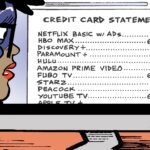 During his first US appearance, Alibaba CEO Daniel Zhang pledged the commerce giant wanted to help brands with cross-border commerce, not that it planned to expand into the US market.
During his first US appearance, Alibaba CEO Daniel Zhang pledged the commerce giant wanted to help brands with cross-border commerce, not that it planned to expand into the US market.
It appears he is making good on this strategy.
Alibaba on Monday formed a strategic partnership with consumer packaged goods brand Unilever in order to reach more Chinese consumers. In addition to expanding access to Unilever brands like Dove and Lipton, Alibaba revealed it would help Unilever with its digital ad strategy by integrating online and offline marketing efforts.
Using Alibaba’s ad network and marketing services platform Alimama, advertisers can buy on a cost-per-click basis display or affiliate links on Alibaba properties as well as Alimama’s Taobao Affiliate Network partners. A brand can set demographic and geographic targets using Alibaba’s auction-based bidder, and tailor creative based on product availability and price.
Unilever will use Alimama for audience targeting based on consumer data it collects from 100 million daily active users. It will also run a two-day flash-sale promotion, offering Tmall (Alibaba’s business-to-consumer marketplace) users 50% off products in Unilever’s global Tmall store.
Alimama’s marketing services generate about 60% of Alibaba’s revenue. This revenue is driven by the 8.5 million merchants on its platform, many of whom distinguish themselves either through direct marketing or by identifying user behavior for affiliates to tap into. A number of advertisers use Alimama, which merged with the Taobao Affiliate Network to fuel Taobao Ad Network and Exchange for network buys.
Unilever itself is a seller and advertiser and sponsors custom units on Tmall, such as a rotating banner for featured promotions and discounts to select stores.
Unilever also has an offline component to its ecommerce and marketing strategy on Alibaba.
“One of the key highlights of the Alibaba/Unilever partnership are the unique QR codes printed on Unilever products, which extend it as a touch point with consumers,” said Gene Cao, a senior analyst at Forrester. “[More data] for marketing and advertising will be generated around these QR codes.”
Because Chinese brick-and-mortars have to deal with counterfeit merchandise, Alibaba created a product verification program this year called Blue Stars, which allows consumers to scan a QR code on partner merchandise and verify its authenticity online using Alibaba’s massive product database. Brands like L’Oréal and now Unilever have signed on.
“Online payment services like Alipay [Alibaba’s payment processor] and QR codes are often the most convenient way for rural customers to buy and verify goods,” noted Jin Di, a Chinese ecommerce and business strategy analyst for Forrester. She said this data will make Alibaba’s service “stickier,” and ultimately strengthen Alimama’s data capabilities.
A number of CPG manufacturers are trialing new retail integrations to reach urban and rural Chinese consumers, said Cao. P&G played up social marketing and partnered with the Chinese equivalent of Buddy Media, Social Touch, to create brand awareness. Nestle built a centralized command center to analyze customer behavior on social, ecommerce marketplaces and other publishers.
He added: “[You see CPGs] using cross-channel digital analytics to aid their local marketing, sales and R&D efforts.”














